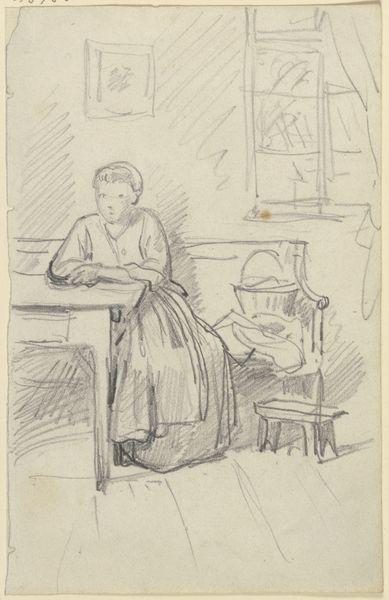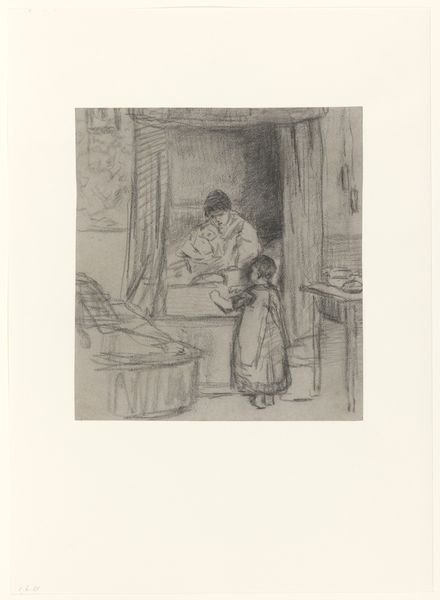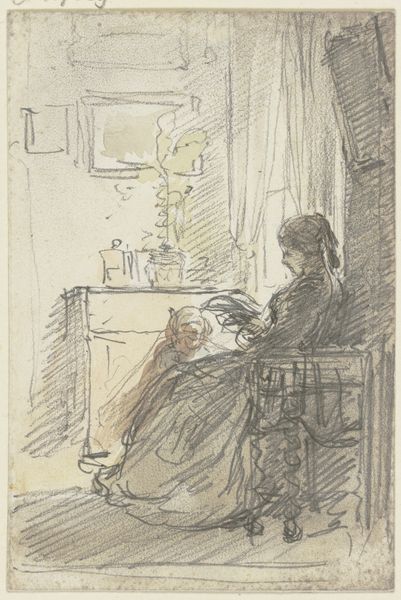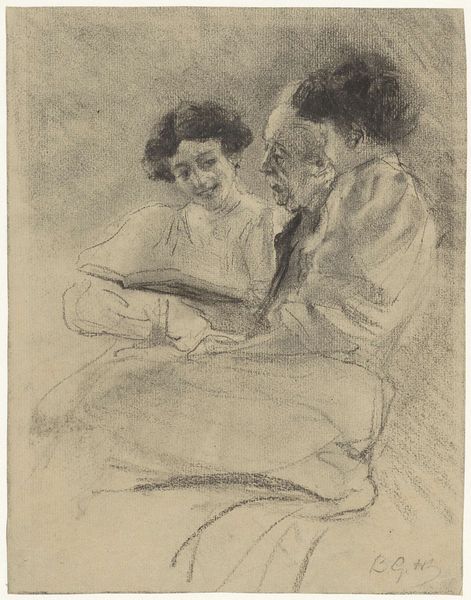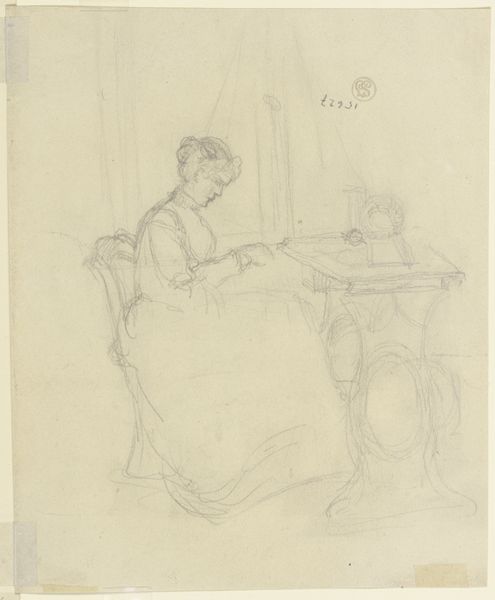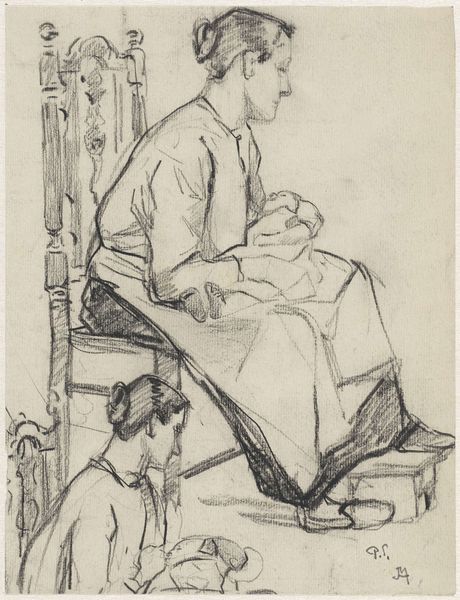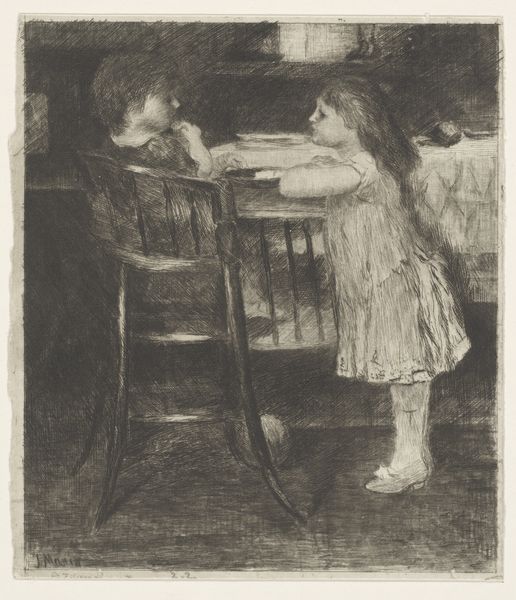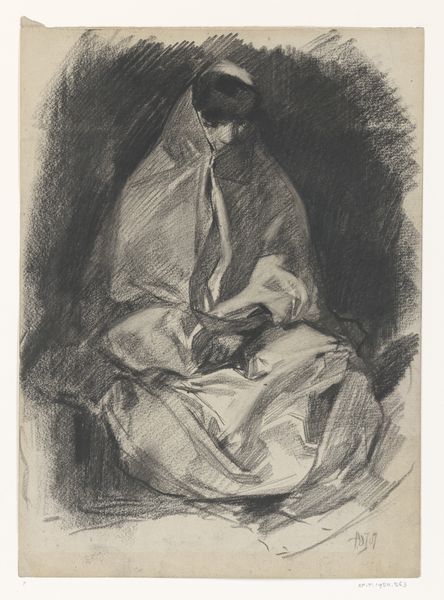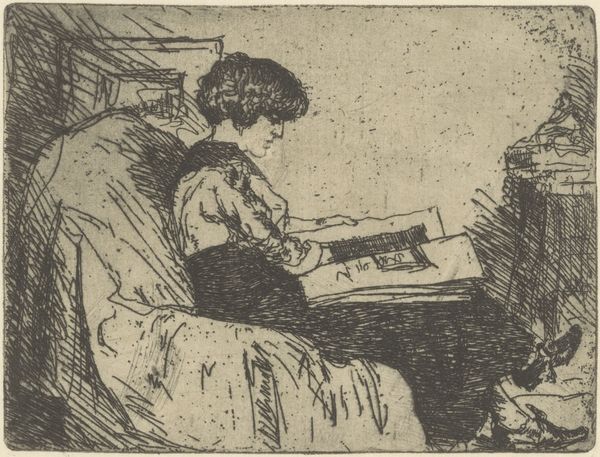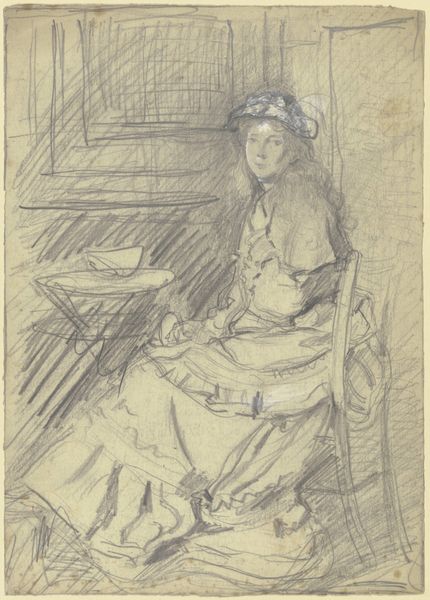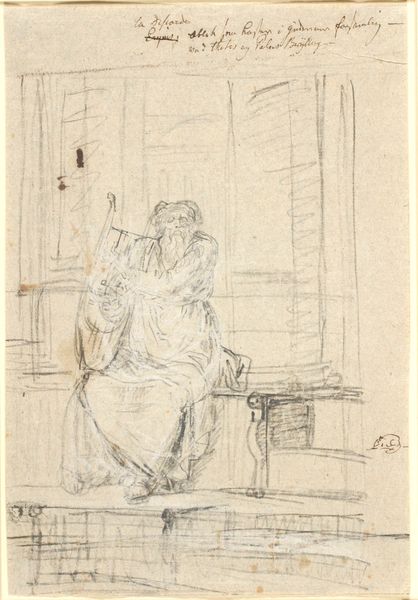
Willem Augustus (of Anton?) van der Hart (1780-1824). Zeeofficier, in 1813 als kolonel belast met het opzicht over werven en havens te Rotterdam 1815
0:00
0:00
drawing, pencil, graphite
#
drawing
#
figuration
#
pencil
#
graphite
#
pencil work
#
genre-painting
Dimensions: height 23.5 cm, width 18 cm
Copyright: Rijks Museum: Open Domain
Curator: Here we have Cornelis van Cuylenburgh’s graphite and pencil drawing, from around 1815, which the museum rather wonderfully titles "Willem Augustus (of Anton?) van der Hart (1780-1824). Zeeofficier, in 1813 als kolonel belast met het opzicht over werven en havens te Rotterdam". Quite a mouthful. Editor: My first impression is that it has such a fleeting, almost dreamlike quality to it. The figures are suggested more than fully defined. Curator: Well, what interests me is the sitter's role in Rotterdam's naval affairs during a pivotal period. Cuylenburgh’s portrait allows us to visualize one of the men responsible for managing the city's shipyards and harbors right after the Napoleonic era. Editor: You say visualize, but note how the artist renders the textures and tonal values to create the illusion of depth and form with remarkable efficiency. The composition, even in its simplicity, draws your eye immediately to the Colonel’s figure and back again, with each glance. Curator: True, but understanding the political and social context enhances our appreciation. After the French occupation, there was immense pressure to rebuild the Dutch naval fleet. This Colonel’s contribution to Rotterdam, the home of the largest naval port, was vital. Editor: From a purely visual standpoint, the use of line and shading alone brings us into this intimate interior space, that hints at some kind of interaction between the woman and child and the important sitter. Look at the rough hatching! It almost creates a vibration around the forms. Curator: Considering the medium, it seems this work would have been very approachable for contemporary audiences; not every notable citizen could afford to commission oil paintings. Graphite drawings provided a means to disseminate images more broadly. Editor: Perhaps. But think about the expressive potential within this seemingly limited palette. The subtle variations in tone and the delicate rendering of light… These are not just documentary; they're emotionally evocative. Curator: Indeed, both things can be true. Editor: And finally, observe that this delicate balance, is where the drawing derives so much of its character. Curator: It is an insightful way to perceive a portrait that speaks quietly of restoration after war.
Comments
No comments
Be the first to comment and join the conversation on the ultimate creative platform.
